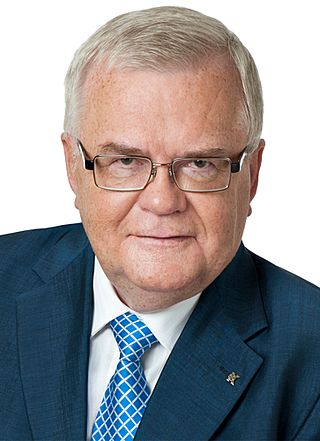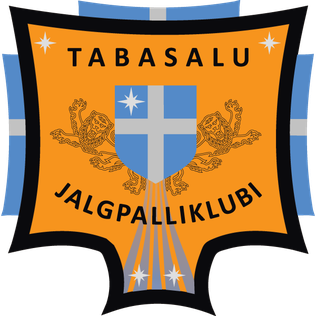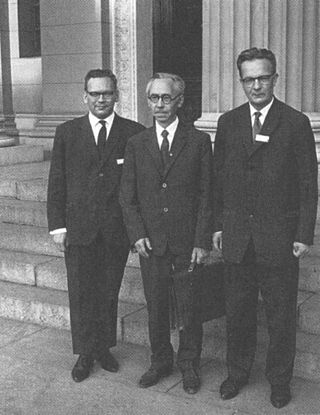
Harju County, is one of the fifteen counties of Estonia. It is situated in northern Estonia, on the southern coast of the Gulf of Finland, and borders Lääne-Viru County to the east, Järva County to the southeast, Rapla County to the south, and Lääne County to the southwest. The capital and largest city of Estonia, Tallinn, is situated in Harju County. Harju is the largest county in Estonia in terms of population, as almost half (45%) of Estonia's population lives in Harju County.

Edgar Savisaar was an Estonian politician, one of the founding members of Popular Front of Estonia and the Centre Party. He served as the acting Prime Minister of Estonia, Minister of the Interior, Minister of Economic Affairs and Communications, and twice mayor of Tallinn.

Vasalemma Parish was a rural municipality in north-western Estonia. It was a part of Harju County. The municipality had a population of 4,991 and covered an area of 38.66 km2. The population density was 129.1 inhabitants per km2.

Rummu Jüri was an Estonian itinerant, thief and robber. He has become the archetypical Estonian folk hero, an outlaw who stole from the rich to give to the poor. Although most noted for his material egalitarianism, in the stories he also pursues other types of equality and justice.

The Holocaust in Estonia refers to Nazi crimes during the occupation of Estonia by Nazi Germany.

Harku Lake is a 162.9 ha lake on the western border of Tallinn, Estonia. It has an average depth of 1.6 m (5.2 ft) and a maximum depth of 2.5 m (8.2 ft).

Harku is a small borough in Harku Parish, Harju County, northern Estonia. As of the 2011 census, the settlement's population was 868, of which the Estonians were 539 (62.1%).

Rummu is a small borough in Lääne-Harju Parish, Harju County, northern Estonia. As of the 2011 census, the settlement's population was 1,088, of which the Estonians were 288 (26.5%).

Hüüru is a village in Saue Parish, Harju County in northern Estonia. It's located 3 km (1.9 mi) west of the border of Tallinn, on the crossing of Tallinn–Paldiski road (E265) and Vääna River, just next to Harku. Hüüru has a population of 417.
Haavakannu is a village in Kuusalu Parish, Harju County in northern Estonia.

Harku manor was a manor in Harjumaa, Estonia. According to current administrative borders it is located on Harku Parish in Harju County.

The Rummu quarry is a submerged limestone quarry located in Rummu, Vasalemma Parish, Estonia, Europe. Much of the natural area of the quarry is under a lake formed by groundwater, and is situated next to a spoil tip. The quarry is close to two former prisons, the nearest being the former Rummu prison.

Jalgpalliklubi Tabasalu, commonly known as Tabasalu, is an Estonian football club based in Tabasalu, Harku Parish. The club competes in Esiliiga, the second tier of Estonian football. Tabasalu's home ground is Tabasalu Arena.

Patarei Prison, also known as Patarei Sea Fortress and Tallinn Central Prison, commonly known as The Battery (Patarei), is a building complex in Kalamaja district of Tallinn, Estonia. The premises cover approximately four hectares of a former sea fortress and prison, located on the shore of Tallinn Bay.
Harku Prison was an Estonian prison. The prison was located in Harku, Harju County.

Tallinn Prison is an Estonian prison, which is located at Soodevahe, Rae Parish, Harju County. Previously the prison was located at Magasini Street, Tallinn.

Andres Ehin was an Estonian writer and translator. In 1964 he graduated from University of Tartu, studying Estonian philology. From 1972 to 1974 he was the senior scientific editor of Estonian Soviet Encyclopaedia. From 1972 he was a member of Estonian Writers' Union. From 1968 to 1989 he was a member of Communist Party. In 1990 he joined Estonian Social Democratic Party.
Edgar Arro was an Estonian composer.
Leo Normet was an Estonian composer, musicologist.

August Annist was an Estonian literary and folklore scholar, writer and translator.
















